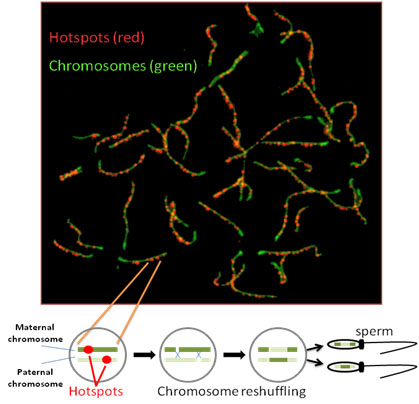Rafael Daniel Camerini-Otero, M.D., Ph.D. Research Images

In this image, hundredfold magnification of a single sperm precursor cell shows the chromosomes – in green – and the places where these chromosomes are most likely to break apart and re-form, called genetic recombination hotspots – in red. Genetic rearrangements at these hotspots have the potential to shuffle maternal and paternal chromosomes, the end results of which ensure that the genetic information in every sperm cell is unique. Source: Fatima Smagulova, Ph.D., USU, and Kevin Brick, Ph.D., NIDDK, NIH.
Page last updated: April 05, 2011